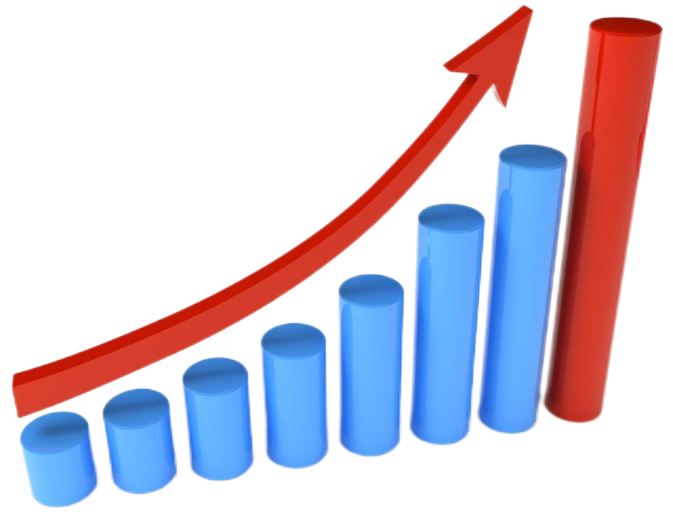All parts of the supply chain are more complex than ever. Companies face many challenges in today’s market. These include missing critical elements, port congestion, rising transport costs, cargo delays, and customer needs. Companies are also paying more attention to creating a sustainable supply network and the role of automation and efficiency in minimizing time-intensive and resource-intensive processes.

Supply chain efficiency is the optimal use of resources in supply chain management. A more efficient supply chain will have lower operational costs, shorter lead times, and spend less time managing it than one that is inefficient.
A supply chain is a complex collection of activities that produce and deliver customers’ goods and services. It includes sourcing raw materials from suppliers and moving them through relevant manufacturing operations to get the finished goods to customers. An efficient supply chain optimizes each step to ensure suppliers fulfill orders on time and minimizes costs.
Although every company has different priorities, many metrics can be used to measure the efficiency of supply chain management. The following are some of the most common metrics:
Inventory turnover: is the annual cycle of Inventory in a company. It was calculated as the average inventory/cost of goods sold.
Days Sales Outstanding: The time it takes to collect payments from customers. A company’s DSO measures how quickly it collects payment from customers.
Days Inventory Outstanding: The average time a company keeps its Inventory before selling it. Calculated as the average inventory/cost per unit of goods sold over time. A company’s DIO measures how quickly it converts Inventory into sales.
Cash conversion process (CCC): The number of days it takes to convert cash into Inventory and sales through sales.
Customer order time: The number of days it takes to complete a shipment once a customer has already placed an order.
Supply Chain Cycle Time: The time it takes to fulfill a customer’s order, assuming that inventory levels are at zero when the order is placed. The shorter the cycle, the more efficient the supply chain will be and the better positioned the company will be to respond to market changes.
Perfect order measurement: the percentage of standard orders not affected by mistakes, including missing goods, inaccurate packages, or late delivery. The supply chain is more efficient with fewer errors.
Fill Rate: The percentage of customer orders that can immediately be fulfilled with available stock, without other unexpected situations, like backorders and missed sales.
It is crucial to optimize your supply chain. It can help you save money and keep customers happy. A well-organized supply chain will result in faster order processing, better inventory management, and quicker delivery. It can often lead to higher profits.
Supply chain efficiency refers to how efficiently a company uses its resources to produce and deliver high-quality goods. Supply chain effectiveness is how satisfied a company’s customers are with its products.
Experts view supply chain efficiency as an internal standard. On the other hand, supply chain effectiveness is an external standard that measures how well the business meets customers’ needs. Experts associate “supply chain efficiency” with “supply chain effectiveness,” but experts admit that companies can have an inefficient supply chain. It can also have a weak supply chain. Balance is what the most successful companies seek.
As the past few years have demonstrated, companies can create costly problems by striving for efficiency too high. According to a 2014 study entitled “Reducing Supply Chain Risks,” companies who make their supply chains extremely efficient could experience costly disruptions. The study showed that Toyota Motor Corp. lost billions in sales due to a product recall in 2010. The recalls were caused primarily by the car company’s dependence on one part from one manufacturer.
Companies that have embraced just-in-time manufacturing are often left behind. Leaders must be able to monitor their supply chain performance and consider potential disruptions before deciding how efficiently they want to work.
Companies can increase supply chain efficiency in a variety of ways. These include speeding up processes, reducing errors, and driving down costs. They can also free up staff from manual tasks and improve supplier communication. To improve supply chain management efficiency, businesses should concentrate on four key areas:
Automation processes can help businesses improve efficiency. Automating critical processes can save time, free staff from repetitive tasks, and focus on more valuable tasks. Automating essential processes minimizes the chance of errors.
Having greater visibility into your supply chain can help spot potential issues. It allows you to see the preciseness Inventory at each stage of your inbound and outbound processes. You also can track your logistics and transport activities in real-time. Your business can be better to react to any changes in customer demands and unexpected disruptions if you have excellent visibility over your Inventory.
Supply chain efficiency, which is, by definition, requires companies to think about more than one party. Any inefficiencies on the supplier side can have an impact on the overall efficiency of your supply chain.
Every supplier can perform at a different level. You can improve your supply chain management by eliminating suppliers who could be performing better and building solid relationships with suppliers more suited to your business goals.
Supplier management software is an excellent tool for building strong supplier relationships. It can help you save time for communication and quickly share the information flow between your suppliers and you. Communication is a two-way process. The right software should enable you to update suppliers on purchase orders and invoices and ensure that your supplier information remains up-to-date.
Supply chain efficiency can not be achieved during one time trying. Every change because of the industry environment and internal processes updating can lead to new inefficiencies. On the other hand, updating technology can offer additional opportunities to optimize supply chain performance.
In other words: Once you have taken the necessary steps to create a more efficient supply network, you should regularly audit your supply chain efficiency and find potential opportunities to improve it. It would be best if you were prepared to make any necessary improvements or updates.

ShipOut WMS is a warehouse management software that helps warehouses optimize all aspects of their supply chain. ShipOut software helps the warehouse and its customers to improve supply chain efficiency by allowing them to monitor Inventory and see the status of orders in real-time at all stages of the process, helping the warehouse and its customers to make better decisions and improve customer satisfaction.

Last updated: 2025-05-06

Last updated: 2025-04-01

Last updated: 2025-03-03

Last updated: 2025-02-05